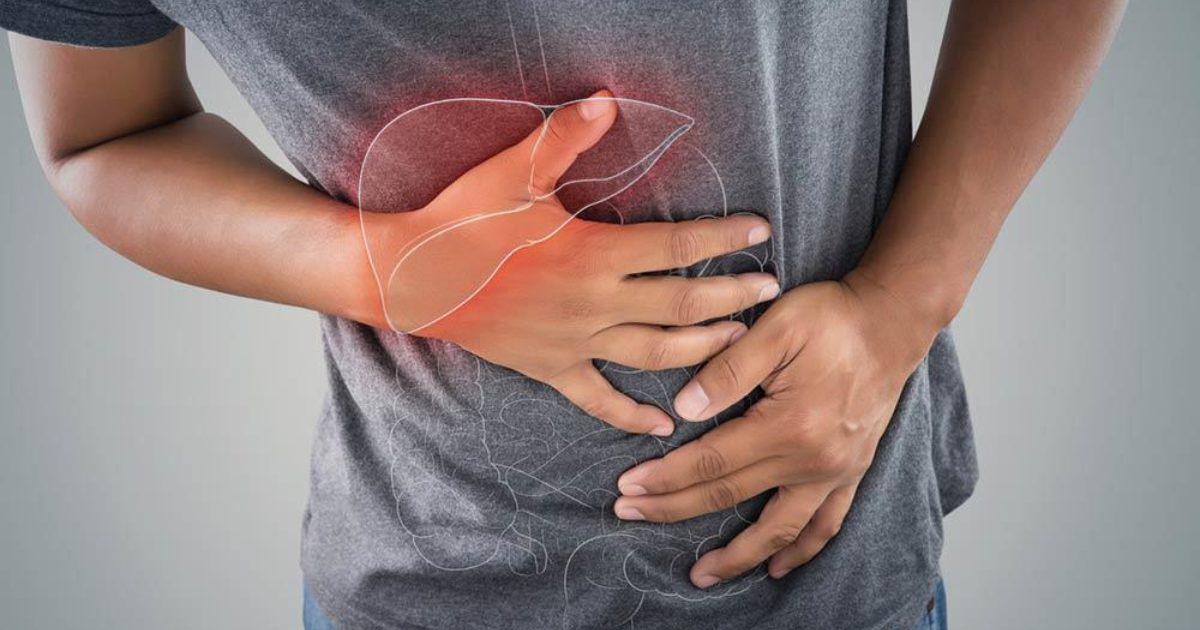
A phrase that frequently conjures feelings of terror and anxiety, cancer is a complicated illness that affects millions of people worldwide. In a multimodal approach, cancer diagnosis is traditionally achieved by combining imaging, biopsies, and clinical evaluations.
But one topic that's been on scientists' and doctors' minds a lot lately is, "Does cancer have an odor?" This inquiry can sound strange or even absurd at first, but it explores a cutting-edge field of medical study.
The hypothesis that cancer could release a distinct smell that can be detected by cutting-edge technology or, perhaps more intriguingly, by animals creates new opportunities for early diagnosis and detection.
Anecdotal evidence and recent research indicate that volatile organic compounds (VOCs) released by cancerous cells may have unique smells. This article attempts to investigate this intriguing idea, looking at the scientific underpinnings of the idea that cancer smells, the possible use of animals in cancer detection, and the consequences of such a finding on future diagnostic techniques.
The Concept Of Cancer Having An Odor
Does cancer have an odor? This question might seem odd since people can't normally "smell" cancer. However, there is evidence from research that says trained canines may detect some forms of cancer in humans.
It is well known that dogs have a highly developed sense of smell, one that is one million times more acute than that of humans. Dogs have been enlisted and taught to sniff out certain scents, such as those of illicit substances, explosives, and firearms. Dogs also contribute to the hunt for persons who have gone missing. Researchers wanted to know whether or not dogs may assist in the early identification of cancer, so they set out to investigate this possibility.
When you hear the word "volatile organic compounds," or VOCs for short, you might be reminded of the smell of paint thinner or gasoline. VOCs, or volatile organic compounds, are molecules that are released into the atmosphere as a byproduct of the breakdown of other chemical components.
It has been shown that various disorders that affect the human body also release a wide variety of volatile organic compounds (VOCs), which are able to be identified in the exhaled air, skin, blood, and urine.
What Causes Cancer Odors?
The precise reason why cancer smells is still a mystery to scientists. In essence, cancer is the result of improper cell division, which causes cells to proliferate excessively and stop dying when they should. Other healthy cells may perish as a result of this aberrant process, and the body may undergo modifications that result in the production of volatile organic compounds (VOCs).
The body produces these VOCs as a consequence of certain biological activities. VOCs, which may be detected in the breath or urine, can be produced by conditions including infection, inflammation, and even cancer.
In addition to other bodily fluids, cancer patients' breath and urine samples have been shown to include volatile organic compounds (VOCs). Many volatile organic compounds (VOCs) were shown to be present in varying amounts for a range of malignancies, including bladder, lung, prostate, and breast cancers, to mention a few.
According to the study, those who had cancer had greater levels of several VOCs than those who did not. It is noteworthy that there is presently no established protocol for testing for volatile organic compounds (VOCs), and there is no evidence of a therapeutic advantage from doing such tests.
Polyamine is one of the VOCs that can give out an aroma. When cells divide fast, as cancer cells do, this chemical is frequently generated in more significant amounts. Cancer patients' blood and urine can be tested for polyamines.3.
A tumor that has been ulcerated due to cancer that is near the skin's surface might serve as a haven for germs. A foul smell may then come from the illness that follows.
Is A Metallic Smell Related To Cancer?
Research on the possible correlation between cancer and metallic odors is becoming more and more active. Despite its odd appearance, the idea stems from research on the volatile organic compounds (VOCs) released by cancerous cells.
These substances, whose compositions might differ, may be detected as smells. In particular, there have occasionally been reports linking a metallic scent to certain cancer types.
This phenomenon is mostly seen in cases of advanced cancer or certain cancer kinds. For example, certain skin malignancies or ulcerating tumors may smell metallic because of biological fluids interacting with the surrounding air or because of bacterial activity within the tumor.
Similar to this, some blood malignancies may, in theory, smell metallic because of the iron in the blood; however, this is less proven and more hypothetical.
It's important to remember that these findings are not yet commonly accepted as accepted methods of cancer diagnosis. Research on the correlation between metallic smells and cancer is currently in progress, with certain VOC patterns linked to various cancer types being the focus of this work.
This project is part of a larger area investigating the use of fragrance for early cancer diagnosis with the goal of creating effective, non-invasive diagnostic techniques.
Though fascinating, most of the research on the possibility that a metallic scent is a reliable sign of cancer is still in its early stages. In lieu of anecdotal evidence of changes in body odor, people should depend on recognized medical guidance and screening procedures for the diagnosis of cancer.
Can People Smell Some Types Of Cancer?
People are not able to smell cancer. However, some symptoms connected with cancer can be detected through the sense of smell. An ulcerating tumor is a good illustration of this. Ulcerating tumors are exceptionally uncommon.
If you have one, there is a good chance that it emits a smell that is disagreeable to others. The smell might be caused by necrotic or decomposing tissue within the incision, or bacteria could cause it.
Visit your physician if you notice a putrid stench emanating from an ulcerating tumor on your body. A round of antibiotics may be all that's needed to fix it. They may also need to remove any dead tissue from the region. It is essential to maintain as much cleanliness as possible in the region, in addition to keeping it moist but not dripping wet.
Does Cancer Smell Sweet?
A fascinating area of medical research is the topic of whether cancer may smell nice, especially when it comes to the investigation of volatile organic compounds (VOCs) linked to cancer cells. This field of study investigates the hypothesis that the distinct metabolic activities of cancer cells may cause some cancer types to emit particular smells, such as pleasant aromas.
There are anecdotal accounts and preliminary research that indicate some malignancies may really smell delicious, almost like fruit. This is assumed to be caused by cancer cells' altered metabolism, which allows them to create various VOCs in comparison to normal cells. For example, sweet-smelling chemicals may be released when certain sugars and amino acids are broken down in cancer cells.
Among the cancers kinds that have occasionally been linked to a pleasant smell in some studies include lung and breast cancer. It's crucial to stress that these findings are not yet commonly acknowledged or applied in therapeutic settings.
The topic of olfactory detection for cancer is still in its infancy, and although the idea of using smell to detect cancer is intriguing, further investigation and confirmation are needed.
Research in this field is still in its infancy, despite some data suggesting that some malignancies may smell delicious because of the distinct metabolic processes of cancer cells. Although it is an intriguing prospect that could eventually support current diagnostic techniques, it is not a routine tool for cancer diagnosis at this time.
The Role Of Animals In Cancer Detection
The ability of animals, and in particular dogs, to detect cancer by their acute sense of smell has piqued the interest of the medical community to a large degree. In particular, this interest has been focused on dogs.
This innovative strategy for cancer detection investigates the viability of utilizing the exceptional olfactory talents of animals to diagnose the illness in its earliest stages.
The Remarkable Olfactory Capabilities Of Dogs
It is thought that a dog's sense of smell is thousands of times more keen than that of a person. Dogs possess an empathetic sense of smell. They are able to detect minute amounts of a variety of substances thanks to this extraordinary aptitude, which is a capability that is being investigated for its potential to detect cancer.
- Volatile Organic Compounds (VOCs)- Dogs can identify certain volatile organic compounds (VOCs) given out by cancer cells, although humans typically are unable to do so.
- Sensitivity and Specificity- Research has demonstrated that dogs are able to differentiate between odors associated with cancer and those associated with other medical problems, displaying a high degree of precision and sensitivity in their detecting abilities.
Training Dogs For Cancer Detection
The process of teaching canines to recognize cancer requires a high level of dedication and attention to detail. Dogs are taught by their trainers to distinguish the distinctive olfactory signatures of various forms of cancer via the application of strategies based on positive reinforcement.
- Sample Training- Dogs are subjected to a variety of samples, some of which are from cancer patients (such as samples of their breath, urine, or tissue), while other samples serve as a control.
- Positive Reinforcement - A dog is rewarded with a treat when it properly detects a cancer sample, which helps to reinforce the dog's behavior.
- Refining Skills- The training progresses over time, allowing the dogs to acquire a more sophisticated understanding as they learn to differentiate between the various stages and subtypes of cancer.
Types Of Cancer Detectable By Dogs
Research has shown that dogs that have been trained to detect various forms of cancer are successful at doing so, and dogs have been trained to detect a wide range of malignancies.
- Breast and Lung Cancer - According to a number of studies, dogs are able to diagnose breast and lung cancer using breath samples properly.
- Prostate Cancer - It has been demonstrated that dogs can accurately identify prostate cancer from urine samples after being trained to do so.
- Skin Cancer- Dogs have been shown to have the ability to detect certain forms of skin cancer, such as melanoma, based on the smell of the affected area.
The Process Of Cancer Detection Using Dogs
The exact procedure for detecting cancer with dogs differs based on the type of cancer being looked for and the technology being used to look for it.
- Sample Presentation- Within a carefully monitored setting, the dog is shown different samples taken from patients, such as their breath, urine, or swabs of their skin.
- Identification- The dog gives the samples a whiff before displaying a programmed action that indicates the presence of an odor, such as sitting, standing, or pawing at the sample.
- Verification- When a dog makes an identification, the next step in the process typically involves medical testing to verify the existence of cancer.
Technological Advances In Odor-Based Cancer Detection
The quest to emulate the remarkable olfactory capabilities of animals, particularly dogs, has led to significant technological advances in the development of artificial "noses" for cancer detection. These technologies, leveraging bio-sensing and artificial intelligence, are at the forefront of a new era in non-invasive diagnostic methods.
Artificial Olfactory Systems
Artificial noses, or electronic noses, are devices designed to mimic the sensory capabilities of the biological sense of smell. They employ an array of sensors to detect and differentiate between complex odors, including the subtle scent signatures associated with various cancers.
- Sensor Technology - These devices use various sensor types, such as metal-oxide-semiconductor (MOS) sensors, to detect volatile organic compounds (VOCs) emitted by cancer cells.
- Pattern Recognition- Advanced algorithms analyze the sensor data to identify patterns characteristic of specific cancer types.
Integration With Artificial Intelligence
The integration of AI with electronic nose technology has been a game-changer in enhancing the accuracy and efficiency of odor-based cancer detection.
- Machine Learning - AI algorithms learn from large datasets of scent profiles, improving the system's ability to distinguish between cancerous and non-cancerous samples.
- Data Analysis - AI excels in processing complex and large volumes of data, enabling more precise and rapid detection.
Applications And Implications
The implications of these technologies extend beyond the realm of early cancer detection, offering the potential to monitor treatment efficacy and recurrence.
- Early Detection- Artificial noses could provide a non-invasive, cost-effective means for early cancer screening, potentially catching the disease in its nascent stages.
- Personalized Medicine -These devices could be used to monitor individual responses to cancer treatments, aiding in personalized medicine approaches.
Challenges And Future Directions
Despite promising developments, challenges such as sensor sensitivity, specificity, and standardization need to be addressed.
- Enhancing Accuracy- Ongoing research focuses on refining sensor technology and AI algorithms to enhance detection accuracy.
- Clinical Trials- Large-scale clinical trials are essential to validate these technologies in real-world settings.
How To Manage Odor From Cancer Treatment
You might attempt the following if you are concerned that the cancer therapy you are receiving is causing you to have an offensive odor:
- Consuming enough fruits and vegetables might assist in the process of detoxifying your body. The fiber will also assist in maintaining regular bowel motions for you.
- Consume a lot of water so that the color of your urine will be less noticeable. Hydration helps digestion, lessens the unpleasant odor that is produced when you pee, and restores fluids that are lost via sweating.
- Antibiotics are going to be prescribed to you by your doctor if you have a urinary tract infection (UTI). Take them in the manner specified.
- Exercise according to the amount of activity that your primary care physician recommends. The release of toxins from your body is facilitated in part by healthy exercise that leads to profuse sweating.
- Take some time to relax in the tub. It has the potential to clear your body of scents associated with exercise and medication, leaving you feeling clean and revitalized.
- Frequently wash your bed linens, including your sheets and blankets. They may begin to smell unpleasant as a result of their sweat, lotions, or medications.
- Maintaining excellent oral hygiene during chemotherapy can help protect against the development of foul breath. It is essential to brush and floss your teeth on a consistent basis; however, if your gums bleed easily, you should floss less frequently.
- Talk to your physician if you find that you are throwing up regularly. Anti-nausea prescription pills may be able to reduce or eliminate vomiting, one of the factors that contributes to foul breath.
Does Cancer Have An Odor - FAQs
Does Cancer Give Off An Odor?
Certain types of cancer can produce odors from the skin, mouth, or bodily fluids due to changes in the body's metabolism and chemical balance.
What Cancer Changes Smell?
Nasal and paranasal sinus cancers can alter the sense of smell, affecting how a person perceives odors.
Do People Know If They Have Cancer?
People may not initially know they have cancer. Symptoms like fatigue, fever, or weight loss, along with changes in organs, blood vessels, and nerves, can indicate its presence.
What Does Cancer Pain Feel Like?
Cancer pain varies, ranging from mild to severe. It can manifest as a sharp, stabbing pain, a tingling or burning sensation, or a continuous ache.
Conclusion
The concept does cancer have an odor or not, detectable by trained dogs and potentially identifiable through advanced technology, represents a groundbreaking area in cancer research.
While humans generally cannot smell cancer, dogs' acute olfactory senses enable them to detect volatile organic compounds (VOCs) emitted by cancerous cells. This has sparked interest in developing artificial "noses" using sensor technology and AI, aiming to replicate dogs' detection abilities for non-invasive cancer screening.
Although these innovative methods are not yet standard in cancer diagnostics, they hold significant promise for early detection and personalized treatment strategies, marking an exciting intersection of biology, technology, and animal training in medical research.



